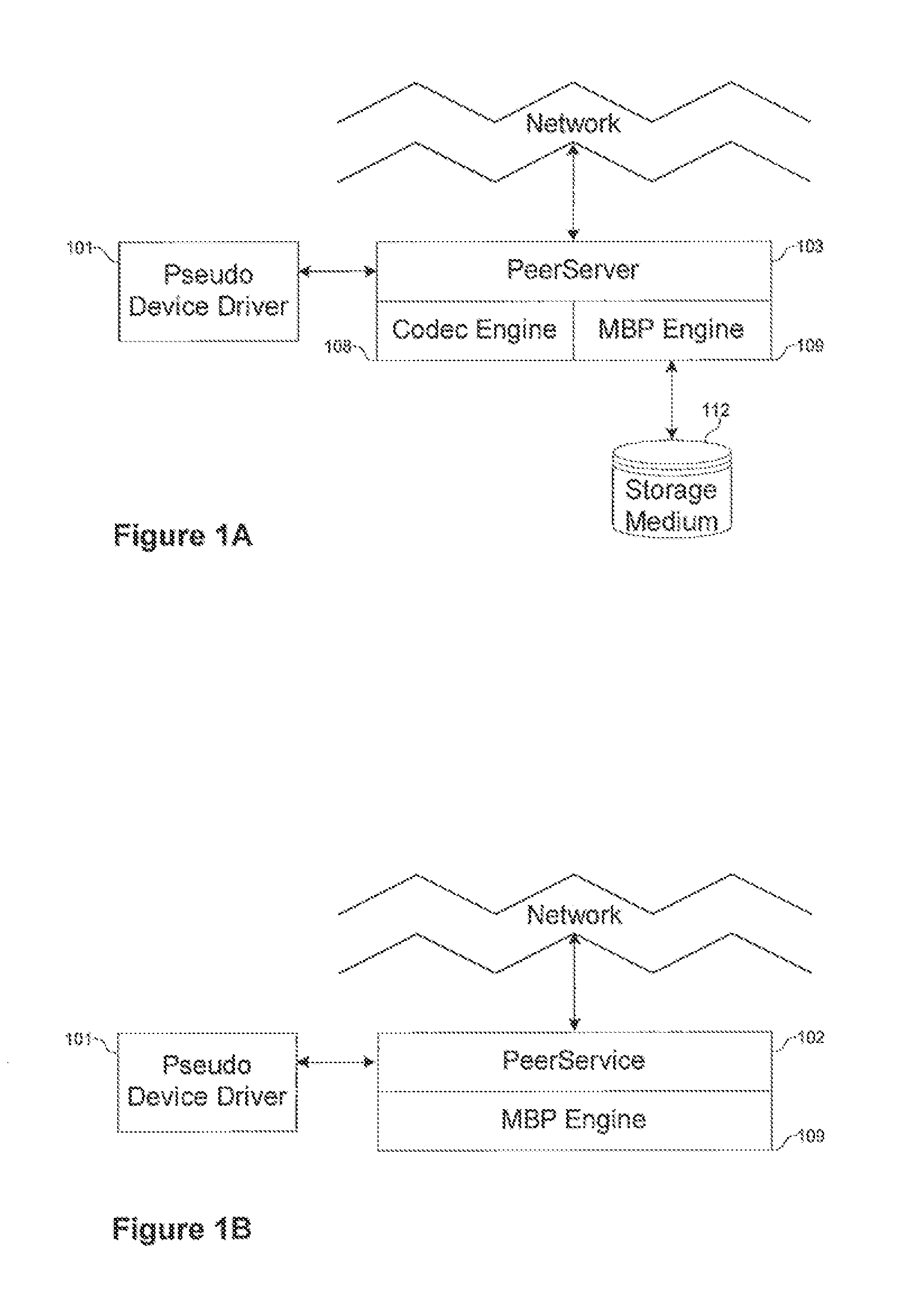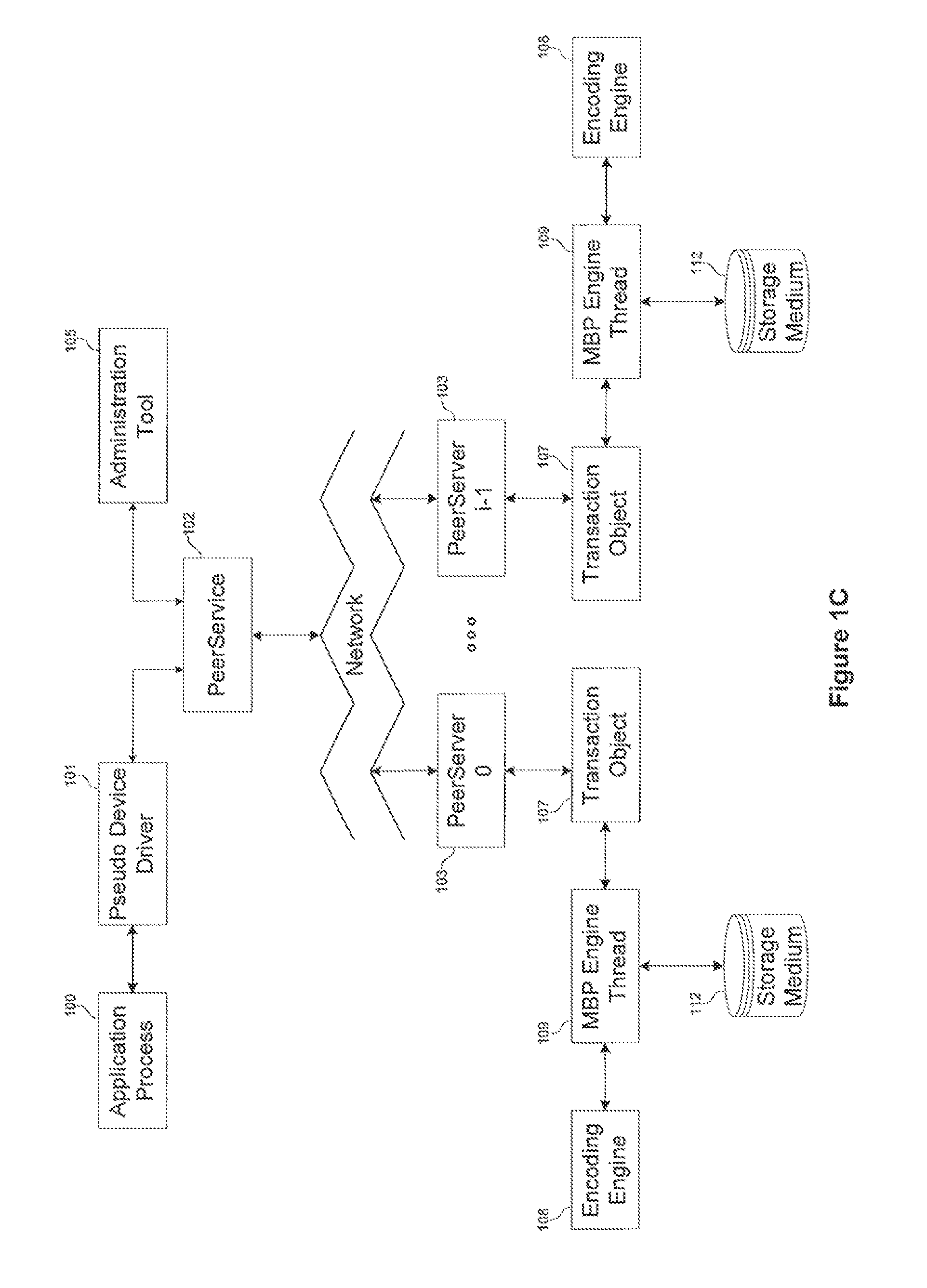Peer to peer code generator and decoder for digital systems
a digital system and code generator technology, applied in the field of encoding and decoding digital content, can solve the problems of inability to meet the requirements of most software applications, lack of performance, and time-consuming encoding process of reed-solomon, and achieve high availability of content, reliable, distributed, efficient and highly scaleable
- Summary
- Abstract
- Description
- Claims
- Application Information
AI Technical Summary
Benefits of technology
Problems solved by technology
Method used
Image
Examples
first embodiment
A First Embodiment
[0161]A first embodiment of the present invention is a content-on-demand distribution system. In this embodiment computers with available storage capacity and broadband access to the Internet join to form communities of peers. Content stored in any cluster of Storage Systems within a community is potentially available to all the members of the community. The content does not have to be replicated to ensure high-availability or performance as embodiments of the present invention address both. Other benefits arise if the community has subscribers to an ISP service. The ISP will save on bandwidth charges, because the data transmitted between communities of subscribers will remain within the ISP's network, as it is not routed through the Internet backbone. The asymmetric nature of the bandwidth of broadband to the home (xDSL, cable modem, etc.) fits very well the model of many Storage Systems transmitting to one recipient as download bandwidth is greater than upload ba...
second embodiment
A Second Embodiment
[0162]A second embodiment of the present invention is a video-on-demand / audio-on-demand streaming system. The requirements for this embodiment to function are similar to the content-on-demand distribution system previously described. Here the content is to be streamed rather than transferred as it has both video and audio material. One such community could be one or more head ends of a cable provider and the Storage Systems could be the set-top boxes (STB's) provided to the customers. Another such community could be Private Video Recorder (PVR) owners that subscribe to a service. Current STB / PVR technology is converging with computer technology in that both have the most important attributes required for embodiments of the present invention (e.g., a processor, memory, a large capacity hard disk drive, access to broadband, etc.). Further, STB / PVR's are directly connected to conditional access systems and televisions thereby ensuring secure access to the HMF, paymen...
third embodiment
A Third Embodiment
[0163]A third embodiment of the present invention is a high-availability storage management system. In this enterprise environment, off-the-shelf PC's are clustered into a seamless high-performance and highly available storage solution. Very large data sets can be staged providing highly reliable access that can withstand multiple simultaneous failures. The failures are not simply at the component level (e.g., processor, memory, RAID, etc.) but at the entire system level. Embodiments of the present invention stripe the content not across spindles of a single RAID, but across entire systems that themselves may use RAID storage subsystems. In a conventional system, redundancy for hardware components entails a secondary / stand-by resource (e.g., dual controllers, entire system, etc.) and redundancy at the software level usually entails replication of the data onto another server. Yet most redundancy solutions guard against a single point of failure only and a second fa...
PUM
 Login to View More
Login to View More Abstract
Description
Claims
Application Information
 Login to View More
Login to View More - R&D
- Intellectual Property
- Life Sciences
- Materials
- Tech Scout
- Unparalleled Data Quality
- Higher Quality Content
- 60% Fewer Hallucinations
Browse by: Latest US Patents, China's latest patents, Technical Efficacy Thesaurus, Application Domain, Technology Topic, Popular Technical Reports.
© 2025 PatSnap. All rights reserved.Legal|Privacy policy|Modern Slavery Act Transparency Statement|Sitemap|About US| Contact US: help@patsnap.com



